The project to transition from manual to full automation for the FV Hospital Laboratory & Blood Bank Department of has been underway since the beginning of 2023. Mr Friend Maviza (Head of the Laboratory & Blood Bank Department) emphasised that to improve operational efficiency and enhance service quality, they identified the laboratory’s key requirements, collaborated with reputable suppliers, and have taken clear steps for the future.
Reduced Wait Time for Patient Results
Before the automation system was in use, the moment specimens were received at the Laboratory, technicians could only process about 35-40% of the results in 45 minutes. “After implementing automation, we are currently processing around 80 – 90% of the results within the same timeframe,” Mr Friend stated. This demonstrates a doubling of the efficiency and will significantly reduce the reporting time for test results to doctors.
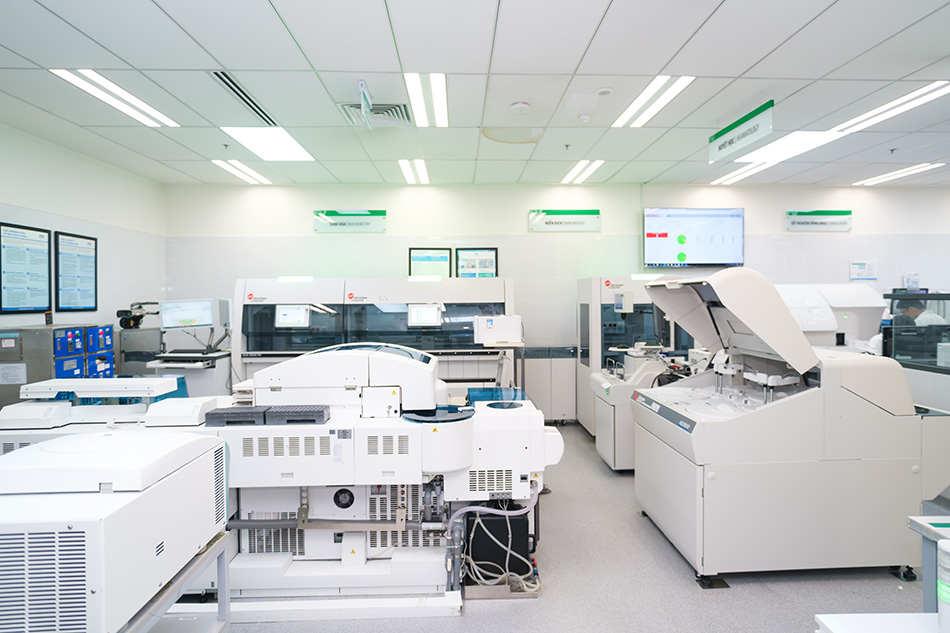
The Laboratory & Blood Bank Department has invested in many new technology systems
The Laboratory & Blood Bank Department invested in the system from Beckman Coulter – one of the leading providers of automation testing and diagnostics systems in the world. The DxA5000fit series is also the first automated system installed in the Indochina region.
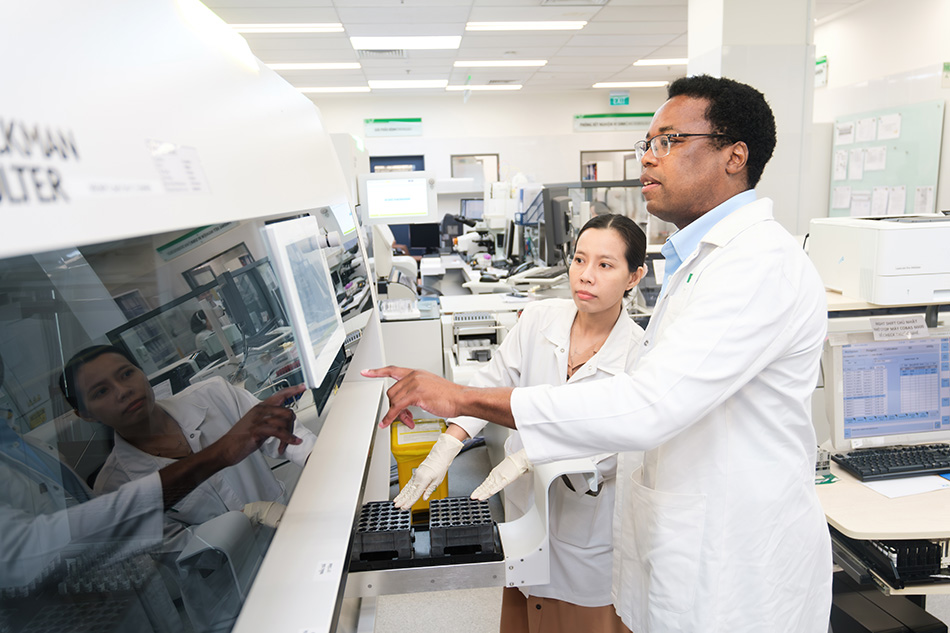
Mr Friend demonstrating the procedures for using the DxA5000fit system
Through the DxA5000fit, new working processes are being formed in the Laboratory. Starting after the patient specimens are received (1) here, the system will proceed with the barcode check (2) to determine patient information and test classification (3). Next is the sample status check step (4) to assess suitability before centrifugation (5) to separate components. Finally, the system will conduct testing (6), check results (7), evaluate or request retesting (8), before issuing the final report to the doctors (9).
This complex process of 9 steps can now be implemented quickly and efficiently in the FV Laboratory. Thanks to automation, the quality of test results has been significantly improved when compared to traditional manual methods.
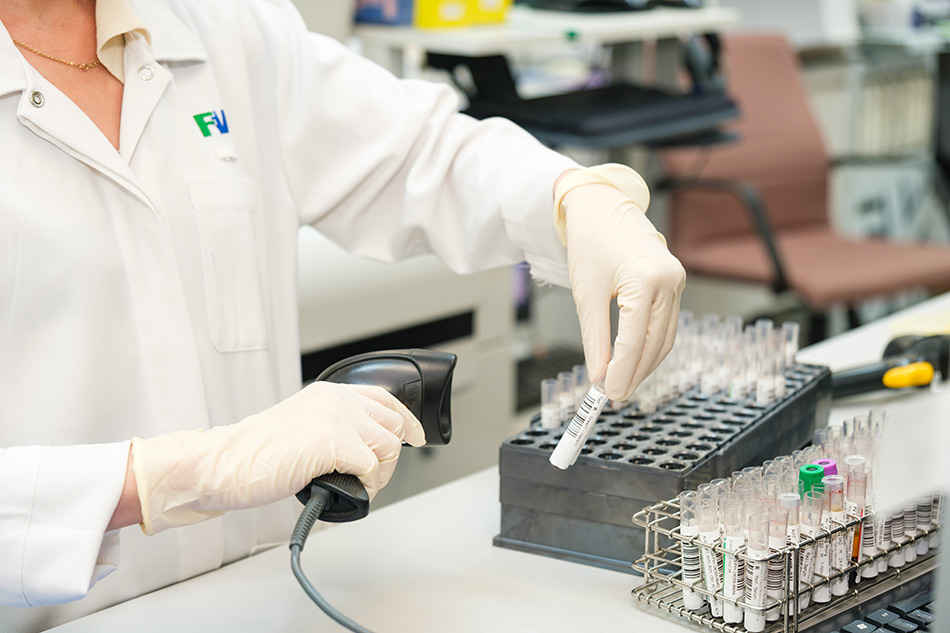
Some manual steps in the process will gradually be replaced.
There was a time when the Laboratory had to evaluate and check about 3000 test results every day. All were done manually. Currently, 95% of the tests have been automated, tightly controlled, and synchronised with the electronic medical records of each patient; all without human intervention. Thanks to the new process, the results are delivered to the doctor’s faster, while minimising transfer errors in between multiple locations and individuals.
More accurate test results thanks to automated analysis technology
Mr Friend explains: “One of the key benefits of automation is reducing the risk of errors caused by humans during the testing process.” The system will standardise some important steps, helping to eliminate the risk of errors such as deficiencies in data checking and processing. In addition to the benefits of reducing testing time and human error, the system also helps to improve the consistency and accuracy of data in the testing process. All test results are standardised and rigorously checked, following the same process, before the final report is issued.
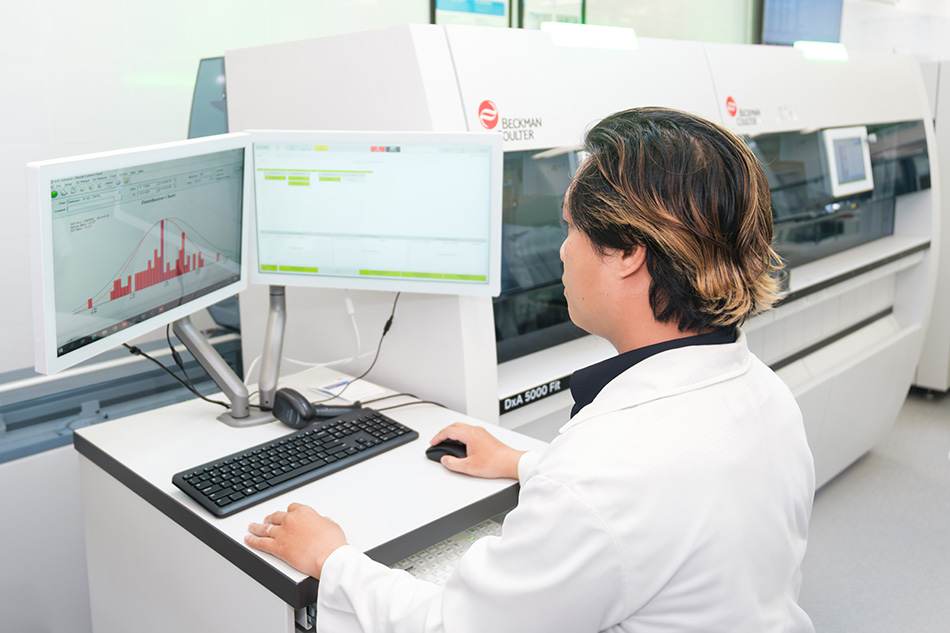
Specialists can easily check the standardisation of tests through automatic data
Mr Friend notes that the system provides many tools for doctors and experts to control the standardisation of tests before issuing reports. In addition to controlling the standardisation of test samples, the system also verifies parameters and equipment conditions, quality management data, compares test values with patient history data, tracks significant changes in data, … thereby providing an overview and an accurate specific report, rather than simply relying on the results of the current test alone.
This comprehensive, rigorous testing process ensures reliable results for all tests, synchronised for samples at the FV Laboratory & Blood Bank Department or at the laboratory at the FV Saigon Clinic (FVC). Mr Friend explained “Imagine being able to get a coffee with the same taste at any Starbucks. That’s the level of standardisation we aim for with this automation system.”
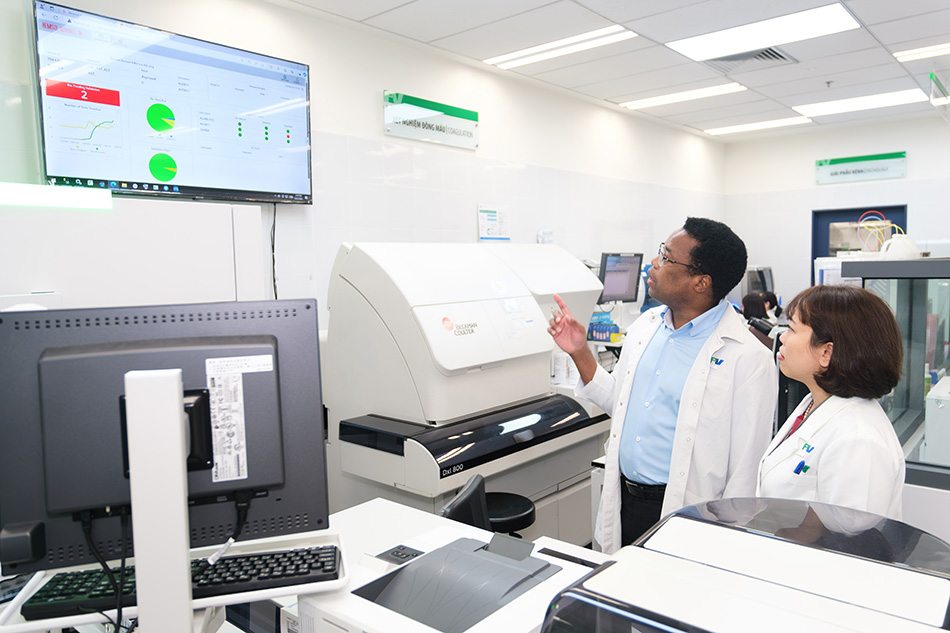
Continuous reports are always up-to-date, helping experts to effectively monitor all on-going tests
Currently, the FV Laboratory & Blood Bank Department is implementing several plans to “fully master” the DxA5000fit system. This includes issues related to training and preparation for personnel, changing some work models, integrating the testing system with medical records systems, enhancing security, as well as to propose solutions regarding policies and balance reasonable costs for patients.
This must be recognised as a significant transformation for the laboratory testing at FV.
The project to transition from manual to fully automated processes in the Laboratory & Blood Bank Department has initially brought many benefits to patients and the hospital. With improved speed of test result processing and increased accuracy, consistency, and data synchronisation, the project has demonstrated FV commitment to improving service quality and meeting the healthcare needs of the community most effectively.
| The impact of automation systems on the work processes of laboratory specialists, Mr Friend Maviza highlights: “In any automation change process, many employees may feel uncertain about the role they will play as machines replace them. Therefore, it is very necessary for us to update employees on the new work processes, how their roles will be enhanced which allows them to undertake more important tasks, while automation will handle the remaining simple tasks.” |

 Vi
Vi 












